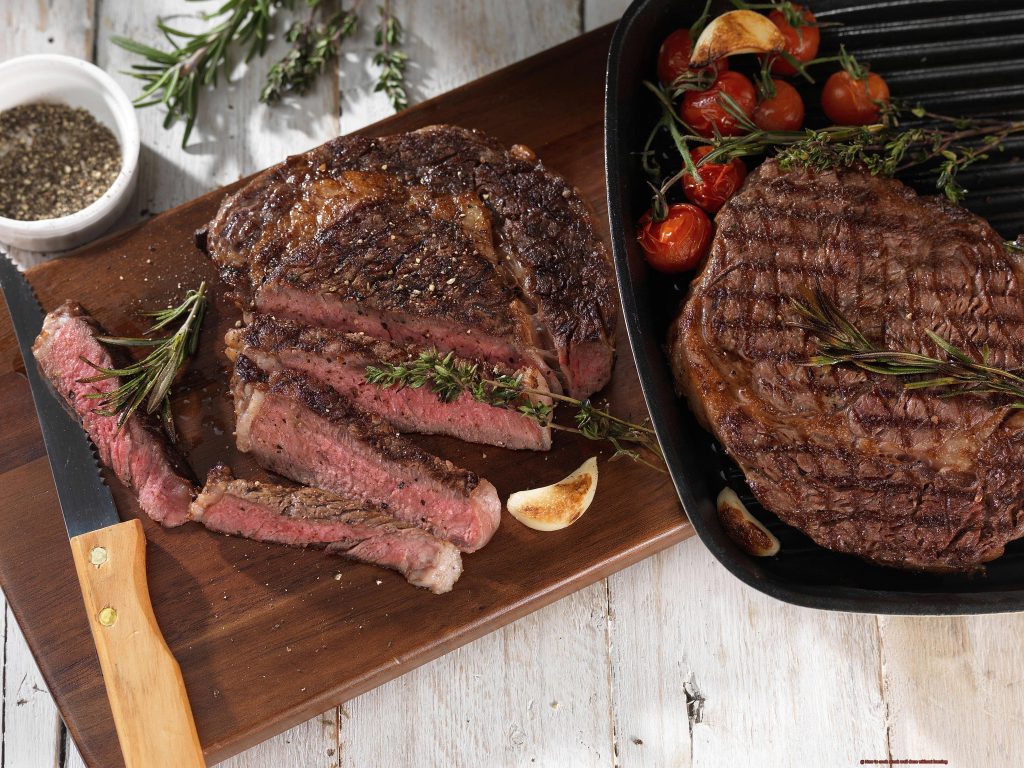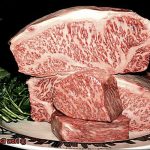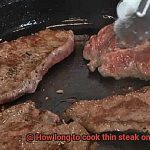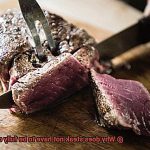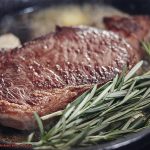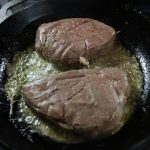Calling all steak aficionados. Are you tired of being served a lackluster and burnt piece of meat every time you order your favorite cut well done at restaurants? Fear not, my friends, because today I’m going to show you how to cook steak well done without burning it.
Cooking a well-done steak can be intimidating, but with some simple techniques and tricks, you’ll soon be able to make a juicy and flavorful steak that satisfies your cravings. Whether you’re a fan of Ribeye, New York Strip or Filet Mignon, these tips will ensure that your final product is tender and packed with flavor.
To begin with, it’s essential to use a high-quality thick cut of steak. Thin steaks tend to cook too quickly leading to overcooked interiors and charred exteriors. Additionally, letting the steak come up to room temperature before cooking ensures even cooking throughout. When it comes time to cook your steak, using high-heat methods such as grilling, broiling or searing in a cast-iron skillet will give you the best results.
But how do we prevent our steak from turning into charcoal? One technique for achieving the perfect well-done steak is by using the two-zone cooking method. Start by searing the steak on high heat for a short period of time then move it over to a cooler part of the grill or skillet until cooked through.
With these tips in mind, get ready for an impressive meal that will leave your taste buds dancing. A perfectly-cooked well-done steak is just around the corner.
Contents
Choosing the Right Cut of Meat
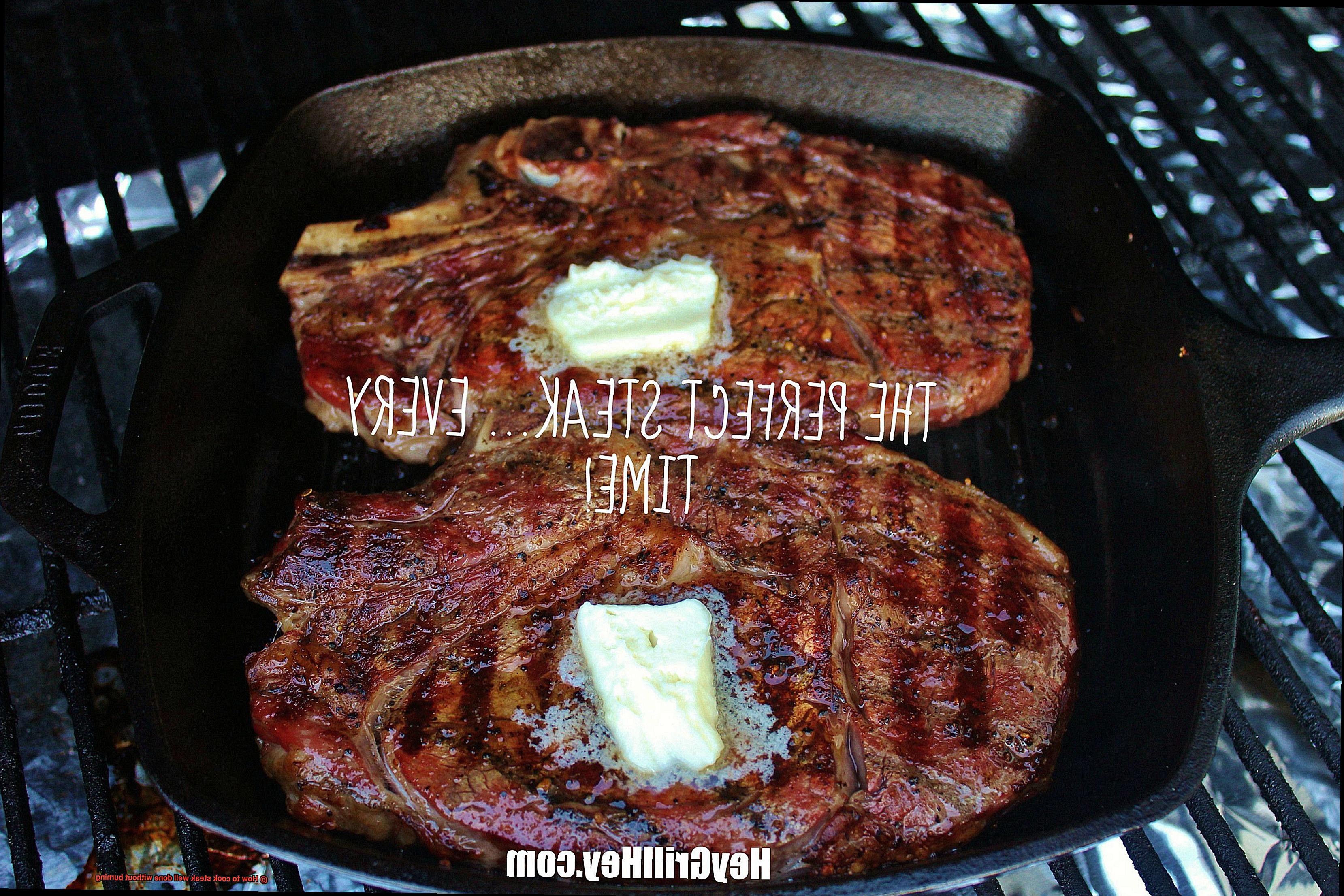
Thickness is the first factor to consider. Thicker cuts are more forgiving and can withstand longer cooking times without drying out or burning. Think of them as the strong foundation of your steak. Cuts such as ribeye, sirloin, and filet mignon are great options for a well-done steak due to their thickness and marbling.
Speaking of marbling, it is the small flecks of fat within the meat that give it flavor and juiciness. Cuts with more marbling, like ribeye or sirloin, are ideal for well-done steaks because they have enough fat to keep the meat juicy and flavorful. Marbling is like the seasoning that makes your steak stand out from the crowd.
Fat content is another crucial factor to consider when selecting your cut. A well-marbled steak with a good amount of fat throughout the meat will be more forgiving when cooking well done, as it helps keep the meat moist and tender. Leaner cuts like top round or eye of round may require additional methods such as marinating or slow cooking to prevent burning and drying out.
Choosing the right cut of meat is key to creating a delicious well-done steak without any burnt edges. It’s all about finding a balance between strength and tenderness.
By considering the thickness, marbling, and fat content of your chosen cut, you’ll be able to create a juicy and flavorful steak that will leave your taste buds dancing with delight.
Bringing the Steak to Room Temperature
You can’t just jump in without taking some time to adjust to the temperature. Similarly, if you put a cold steak on a hot pan, it will shock the meat, causing it to seize up and become tough.
Bringing your steak to room temperature is essential because it allows for even cooking, resulting in a tender and juicy steak from edge-to-edge. Plus, when the meat is warm, the seasoning sticks better to the surface, enhancing the flavor and aroma of every bite.
To bring your steak to room temperature, simply take it out of the fridge at least 30 minutes before cooking. But don’t leave it out for too long, or else bacteria could grow on the surface. If you can’t cook it within 30 minutes, no worries. Just place it in a resealable plastic bag and submerge it in warm water for 15-20 minutes.
Once your steak has reached room temperature, it’s time to season it with your favorite herbs and spices. The warmth of the meat allows the seasoning to penetrate deeper into the meat fibers, enhancing its taste and texture.
Bringing your steak to room temperature is a small step that makes a big difference in the final product. It ensures even cooking, tender meat, and better seasoning absorption.
Sealing in the Juices with a Hot Pan
The key to achieving a flavorful and tender well-done steak lies in sealing in the juices with a hot pan.
Imagine your steak as a sizzling lake brimming with mouth-watering flavors. By searing it in a hot pan, you create an irresistible crust on the surface that locks in all the moisture and taste.
However, to achieve this culinary feat, you need the right tools at your disposal. A heavy-bottomed pan made of cast iron or stainless steel can withstand high heat and help you achieve that perfect sear.
Before beginning the cooking process, preheat your pan on high heat until it’s smoking hot. This may take several minutes, but it’s worth the wait for that perfect sear. While waiting, make sure to pat your steak dry with paper towels to remove any excess moisture.
Once the pan is hot, add a small amount of oil or butter to the bottom of the pan. Then, use tongs to carefully place your steak in the pan without overcrowding it. Overcrowding can cause the temperature to drop, preventing that nice sear from forming.
Allow your steak to cook for a few minutes on one side without moving it. This allows that mouthwatering crust to form on the surface. Then, flip it over and cook it on the other side. To check for doneness, use a meat thermometer – 145°F for medium rare, 160°F for medium, and 170°F for well done.
Once your steak has reached your desired level of doneness, remove it from the pan and let it rest for several minutes before slicing into it. This step is vital as it allows the juices to redistribute throughout the meat and results in a tender and flavorful steak.
Sealing in the juices with a hot pan is crucial when cooking a well-done steak without sacrificing flavor or tenderness. With the right tools and a little bit of patience, you can create a mouth-watering masterpiece that will impress even the toughest critics.
Finishing the Cooking Process in the Oven
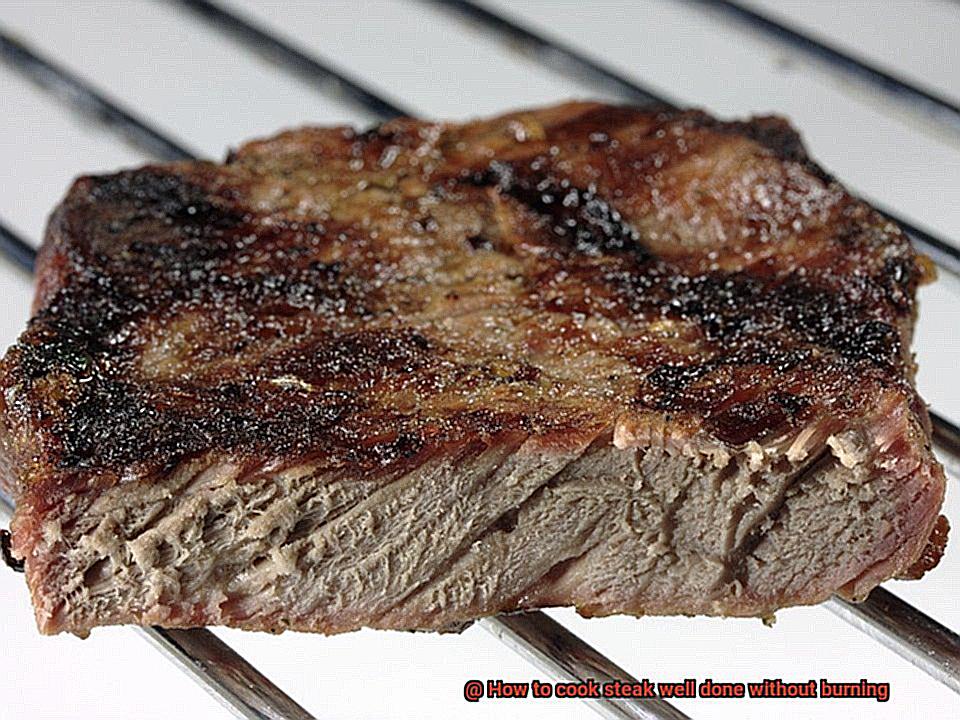
Step one is to preheat your oven to 375°F and place a wire rack on a baking sheet. This will allow air to circulate around the steak and prevent it from getting soggy. Carefully remove the steak from the pan using tongs and place it on the wire rack.
Now it’s time to insert a meat thermometer into the thickest part of the steak, ensuring that you don’t touch any bone or fat. Cook the steak in the oven until it reaches an internal temperature of 160°F for well-done. The cooking time will vary depending on how thick your steak is, so you should always rely on your meat thermometer to determine when it’s done.
It’s important to give your steak some rest time once it has reached the desired temperature. After removing it from the oven, let it rest for 5-10 minutes before cutting into it. This resting period allows the juices to redistribute throughout the meat, resulting in a juicy and flavorful steak.
Remember, patience is key when cooking a well-done steak in the oven.
By following these simple steps, you’ll be able to enjoy a perfectly cooked steak every time.
Checking for Doneness with a Meat Thermometer
Look no further than your trusty sidekick, the meat thermometer. Cooking a well-done steak can be a daunting task, but with the help of this simple and effective tool, you can ensure that your steak is cooked to perfection every time.
Using a meat thermometer is easy. Simply insert the probe into the thickest part of the steak, avoiding the bone or fat. This will give you an accurate reading of the internal temperature. For a well-done steak, aim for around 160°F. Keep in mind that cooking times can vary based on the thickness and cut of the steak, as well as other factors like the heat of your grill or stove. Don’t rely on time alone to determine doneness – use your meat thermometer to get an accurate reading and adjust your cooking time accordingly.
Once your steak has reached its desired temperature, let it rest for a few minutes before cutting into it. This allows the juices to redistribute throughout the steak, resulting in a juicy and tender bite.
In conclusion, using a meat thermometer is crucial in achieving a perfectly cooked well-done steak without burning it. It’s like having a superhero by your side in the kitchen, taking all the guesswork out of cooking times.
Letting the Steak Rest Before Slicing
You’ve done it. You’ve cooked a well-done steak that’s not burnt. But, if you want to take your steak game to the next level, there’s another crucial step you need to know about: letting the steak rest before slicing.
Think of your steak as an athlete in a marathon. After running a long race, the athlete needs time to catch their breath and recover before continuing on with their day. Similarly, after cooking, your steak needs time to rest and recover its juices before being sliced into.
When you let your steak rest, its juices redistribute evenly throughout the meat, resulting in a tender and juicy piece of meat that will make your taste buds sing. So, after cooking your steak to perfection, remove it from the heat source and let it rest for at least 5-10 minutes. During this time, cover the steak loosely with foil or a clean kitchen towel to keep it warm.
It’s important to note that the resting time will vary depending on the thickness of the steak. Thicker steaks will require more resting time, while thinner cuts may only need a few minutes to settle. As a general rule of thumb, aim for a resting time that is half the cooking time.
But wait. Don’t cut into the steak immediately after removing it from the heat source. This will cause all of the juices to escape, resulting in a dry and tough piece of meat. Instead, wait until the resting time is over before slicing into the steak.
In conclusion, letting your steak rest before slicing is a crucial step in achieving a perfectly cooked well-done steak without burning it. By following this simple technique, you can ensure that every bite is juicy, tender, and full of flavor.
Tips and Tricks for Avoiding Burning
Fear not, because we’ve got some tips and tricks to help you achieve the perfect cook without any burnt bits.
Preheat your pan or grill
Make sure to preheat your cooking surface before adding your steak. This will ensure even distribution of heat and prevent sticking, reducing the risk of burning.
Use high heat, but not too high
High heat is essential for searing the outside of the steak and trapping in the juices. However, using too high of a heat can cause burning. Keep an eye on the temperature and adjust accordingly.
Don’t overcrowd the pan
Overcrowding is a common mistake when cooking steak that can lead to uneven cooking and burning. Leave enough space between each steak to allow for even cooking.
Use a meat thermometer
A meat thermometer is your best friend when it comes to avoiding overcooking or undercooking your steak. It helps you monitor the internal temperature of the meat, so you can take it off at the right time without risking burning it.
Let it rest
After cooking your steak, let it rest for a few minutes before serving. This allows the juices to redistribute throughout the meat, resulting in a more tender and flavorful meal.
Bonus tip
If you don’t have a non-stick pan, use enough oil or butter to prevent sticking.
By following these tips and tricks, you’ll be able to cook a delicious well-done steak without any burnt edges or dry spots.
kREW0RlftUw” >
Conclusion
In conclusion, cooking a well-done steak without burning it may seem daunting, but with the right techniques and tips, it’s totally doable. The first step is choosing the right cut of meat; thicker cuts with more marbling and fat content are more forgiving when cooking well done. Bringing your steak to room temperature before cooking ensures even cooking throughout and better seasoning absorption. To seal in the juices, use a hot pan and finish the cooking process in the oven for a flavorful and tender result.
It’s important to check for doneness with a meat thermometer to avoid overcooking or undercooking your steak. Additionally, preheating your pan or grill, using high heat but not too high, not overcrowding the pan, and letting it rest are all essential tips to avoid burning your steak.
By following these expert tips and tricks, you’ll be able to impress yourself and others with a perfectly cooked well-done steak that’s juicy, tender, and full of flavor.

